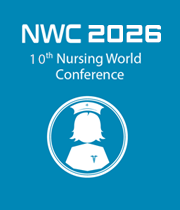Title : On a scale from one to ten
Abstract:
How you can read how much pain someone else has? In biomedicine there is a widespread us of Melzack and Walls gate-control theory that describes that pain is a bio-psycho-social phenomenon, where it is impossible to separate the different components from each other. Phenomenological theories about pain describe pain as unconscious and embodied, and characterized by its interiority that others cannot share with the pain sufferer in both biomedicine and anthropology can pain be characterized as both a personal experience and a relational phenomenon.
I have conducted field work on an orthopedic surgical ward, where I have studied how nurses reads the patients pain and the reasons she has to relieve pain and how these reasons influence her reading of the patients pain. When the nurses on the orthopedic surgical ward read the patients' pain, the nurse's senses are at stake in the immediate context. But her sensory impressions are not alone. They are influenced and shaped in a complex interaction with her past experiences with both her own and others' experience of pain and the knowledge she has that constitute her clinical gaze. In the immediate reading of the patient, the nurse's interpretation of what she observed was always affected by the doubt she had about the validity of the patient’s statement.
The nurses relations to the patients was also affected by the institutional requirements to use the VAS-scale to document the patient's pain, but the use of the vas-scale was just a small part of the double gaze that the nurse uses in her perception of the patient. Nurse classifications of patients also had impact on how nurses and patients interacted and interpreted each other. The nurses used the classifications as a kind of manual for how different types of patients should be perceived and what kind of actions she should choose in relation to the specific patient.
Some of the motivations the nurse has to relieve patients' pain are also linked to her identity as a good nurse: If the nurse is good at reading the patient's pain and subsequent relieve the pain, she will be recognized as a good nurse at both the institutional and relational level. The better she can fulfill the institutional demands, the more institutional recognition she will get as a competent nurse. And the better she can relieve pain and mobilize patients, the more recognition she gets on the relational level and thus enhance her identity as a good nurse.
Audience Take Away:
- Better understanding of the complex world of pain.
- A listing of some of the factors that influence nurses perceptions of acute pain in patients in an orthopedic ward.



